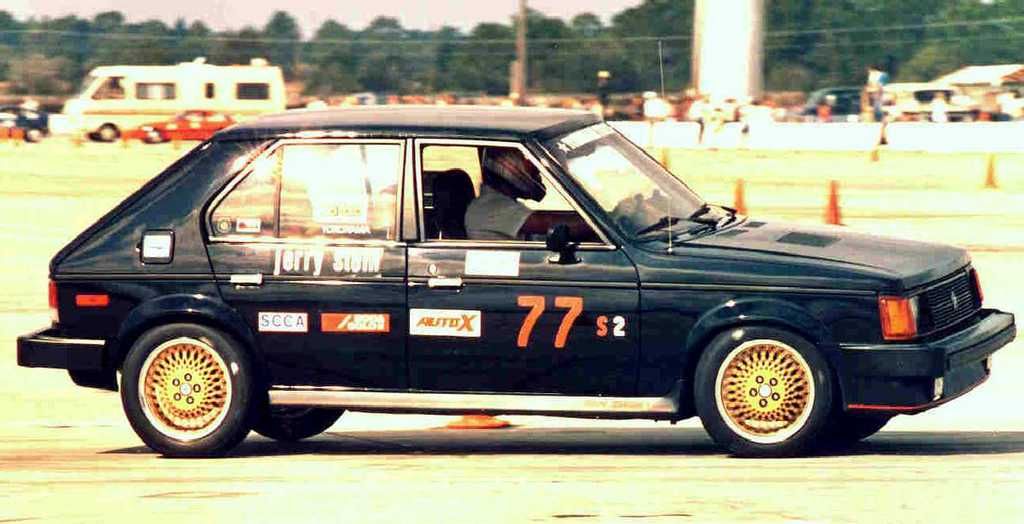Outside door handles break. A lot. They are cheap pot metal pieces and if the linkage gets sticky, etc they will snap off in your hand. The replacements have the same problem.
Luckily they aren't hard to replace and the hatch is big enough to get into the car if the doors won't open.
Cowl and floor boards leak where they meet the firewall, old body putty dries, cracks and falls out over time. Replacing this before the floorboards rust is a good idea.
Working on the engine in the tiny engine bay will get old quick and you'll find that many times it is easier to just remove the entire drivetrain to do much of anything serious to the engine.
Drivetrain is essentially the same as any other T-D except the driver's and front motor mounts are bespoke to the Omni along with the axles.
Stock 5-speed transaxle has a weak differential and the bearings supporting 3rd gear can shift under load and spit the teeth off the gears in 3rd. Shift linkage falls apart. Most people solve the issues with the stock transaxle by using the later model cable operated transaxles. The later cable-operated 520/555 have the same 3rd gear bearing support issue and a Chro-Moly support plate is made for the 525/520/555 to resolve that issue. A differential girdle was available for the 525, but the differential internals themselves just aren't that strong.
Great autox rigs as they are just like slightly larger A1 Rabbits (Dodge set a target for the original GLH to beat the GTi by 10% in all performance categories, which it did) and the suspension tuning tricks used on Rabbits can be adapted to the GLH. This includes balljoint spacers, front struts (with a little work), 5 lug wheels and alignment settings. A simple rear sway bar can be added with some plate steel clamped to the crossbar of the rear suspension arm.
K-member and suspension parts are very similar to the other K-based cars and minivans, but only the control arms are directly shared. The K-members themselves are stamped steel and usually poorly welded. Steering racks sometimes come loose from the K-member and wallow out the mounting holes. 1st-Gen Neons share similar steering racks with slightly slower ratios. 11" front brakes from a later car can be adapted with K-based struts and coil-overs. Rear discs are mostly a bolt-on, but the brake balance needs to be controlled as the rear is much lighter in the Omni.
Biggest issue with the stock suspension is that the sway bar is so poorly mounted that they act as a torsion spring and bind the suspension, making the issue of inside wheel spin worse in the corners. A better sway bar mounting solution, a limited slip and/or shock tuning will cure most of this.
Jetta/GTi "big bumper" covers fits the front of the GLH for a more modern look and better aerodynamics. I'm sure with appropriate sawzall action, other solutions can be found adapted.
Most issues with the gauges are related to bad solder joints on the circuit board on the back of the main cluster. Speedometer is cable driven with a speed sensor for the computer (uses it for fan cycling and idle control)
Steering wheels have a huge dish because the column is not collabsible, so they made the wheel collapse instead. Aftermarket wheels require a collapsable adapter and at least a 2" spacer or your fingers will hit the dash when you turn the wheel.
That one in the link looks to be a great start to a project and I would jump on it with both feet if I had the opportunity as I love the L-bodies.














 In fact, it was my real one between 1985 and 1991. That one looks pretty hacked.
In fact, it was my real one between 1985 and 1991. That one looks pretty hacked.


























